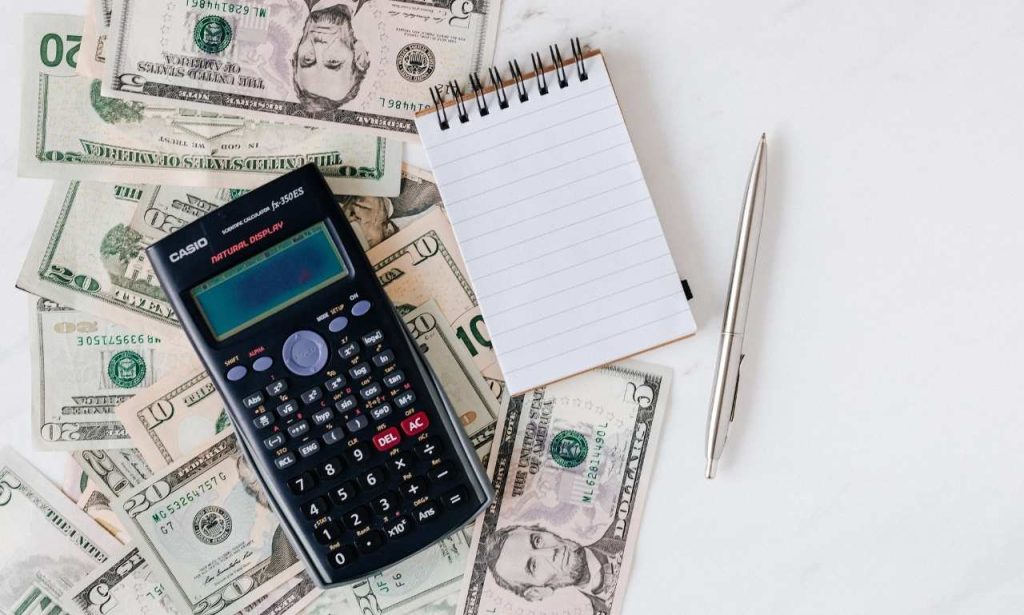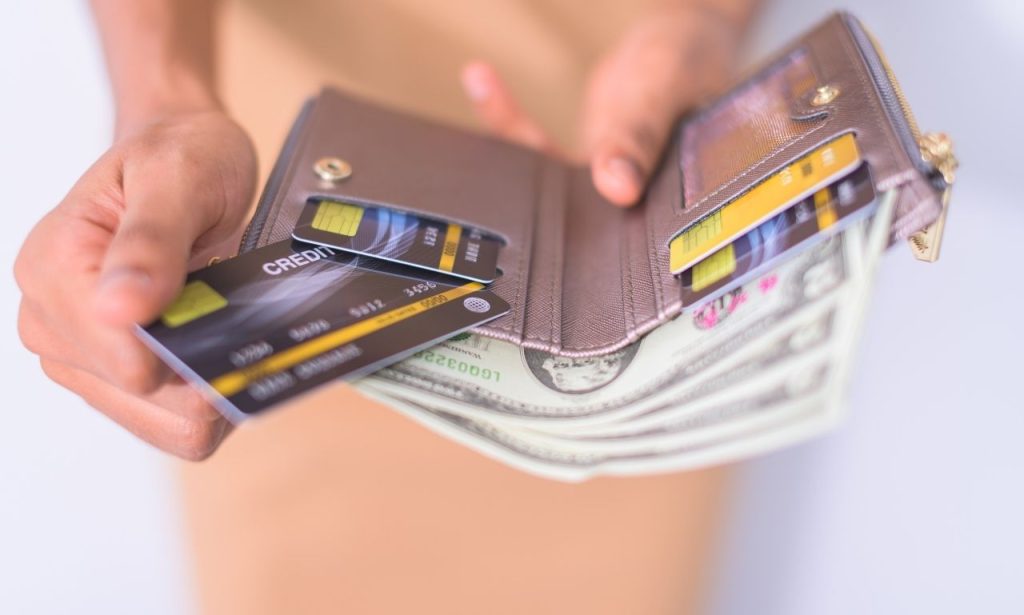Money matters can cause significant stress in our lives. Many of us feel anxious when checking our bank balances. Constant worry about finances significantly affects our mental health. Financial stress also impacts our relationships and overall well-being. I’ve been there myself—watching my account balance shrink faster than expected. That sinking feeling in your stomach never gets easier. But I discovered something that changed everything for me. The answer wasn’t making more money. It was spending it differently. Let me introduce you to mindful spending. This approach transformed my financial life, and it might just change yours, too.
What is mindful spending?

Mindful spending means being fully aware of your financial choices. It involves thinking carefully before opening your wallet. You consider each purchase with intention and purpose—no more shopping on autopilot or impulse buying.
Think of mindful spending as financial meditation. Stay present with your money decisions, giving every dollar your full attention. You also become aware of emotional triggers that lead to unnecessary purchases.
This isn’t about strict budgeting that makes you feel deprived. Instead, it focuses on intentional choices aligned with your values. You spend on things that truly matter to you. Everything else becomes less important.
My client, Sarah, once told me something profound. “Before mindful spending, my money controlled me,” she said. “Now I control my money.”
Key aspects of mindful spending
Awareness sits at the heart of mindful spending. You must know where your money goes each month. This means tracking expenses without judgment. Simply observe your habits with curiosity.
Alignment with values comes next in importance. Your spending should reflect what matters most to you. Family dinners might mean more than designer clothes, and home cooking could bring more joy than restaurant meals.
Breaking unconscious patterns requires attention, too. Most people spend habitually without thought. They buy the same coffee daily without considering alternatives. Mindful spenders regularly question these patterns.
Emotional awareness plays a crucial role in this approach. Many purchases happen because of feelings rather than needs. Understanding your emotional triggers helps prevent impulse buying.
I remember working with Tom, who always shopped when stressed. Once he recognized this pattern, everything changed. He found other ways to manage stress without spending money.
The benefits of money mindfulness
Financial clarity comes first among the many benefits. You’ll know exactly where your money goes. No more wondering about mysterious disappearing funds. You gain control over your financial life.
This clarity naturally leads to reduced stress. When you spend intentionally, money worries decrease, and the constant background anxiety about finances fades away. You sleep better knowing your spending aligns with your plans.
Improved savings happen almost automatically with mindful spending. You naturally spend less on unimportant things. This leaves more money for savings and investments. Your financial future becomes more secure.
Better relationships often result from money mindfulness too. Financial conflicts decrease in households practicing this approach. Couples fight less about spending when both practice awareness. They make decisions together rather than hiding purchases.
Mindful spending habits increase long-term happiness. Research shows that experiences bring more joy than material possessions. Mindful spenders often shift toward experience-based purchasing, creating memories rather than collecting things.
10 mindful spending tips
Track your spending habits
Start by knowing where your money goes. Most people wrongly guess their spending patterns, and they underestimate certain categories significantly. Actual tracking reveals surprising patterns.
Use apps or simple notebooks to record every purchase. Nothing should escape your attention. Even small purchases add up quickly over time. Record everything for at least one month.
Review your spending data without judgment initially. Simply observe the patterns that emerge. You might discover surprising spending leaks. These insights provide the foundation for meaningful changes.
My own tracking revealed a shocking coffee habit. I spent nearly $200 monthly without realizing it. This discovery allowed me to make adjustments based on facts.
Pause before purchasing
The 24-hour rule works wonders for controlling impulse buys. Wait a full day before buying non-essential items. This cooling-off period reveals whether you genuinely need something. Many desires fade after brief reflection.
Ask yourself key questions during this pause. “Do I need this item?” comes first. “Will it add real value to my life?” follows closely. “Would I rather put this money toward my goals?” often clarifies priorities.
Physical distance helps implement this rule effectively. Leave the store or close the website tab. Give yourself space to think clearly. After breaking the shopping momentum, many purchases seem less important.
I teach clients to take photos of desired items instead of buying immediately. This satisfies the initial acquisition urge, and they can decide later with clearer thinking.
Identify your triggers
Emotional spending happens to everyone sometimes. We buy things to feel better temporarily. Recognizing your personal triggers creates awareness. Common triggers include stress, boredom, and social pressure.
Environmental factors also significantly influence spending. Certain stores or websites weaken your resolve, sales and limited-time offers create false urgency, and even shopping with certain friends affects spending habits.
Keep a trigger journal for deeper insights. Note your feelings before unplanned purchases. Over time, patterns will emerge, becoming your personal warning signs.
One client realized she always overspent after difficult work meetings. This awareness helped her create better coping mechanisms. Once she addressed the root cause, she saved thousands.
Use cash instead of cards (when possible)

Physical cash creates psychological friction during spending. Handing over bills feels different than swiping cards. This small resistance makes you think twice. Research indicates that people reduce their spending when they use cash payments.
The envelope system should be implemented for discretionary spending categories. Determine the predetermined amount of cash for variable expenses. When the envelope becomes empty, all spending automatically ends. This approach creates defined limits for problem areas.
Use credit cards only for necessary purchases you have planned ahead. The allocated cash payments should cover your bills, grocery expenses, and basic needs. By keeping payment cards out of reach, spontaneous spending becomes less possible. Some individuals decide to place their credit cards inside frozen ice cubes.
In my experience, this system produces excellent results. My restaurant expenses decreased by half when I limited myself to using cash alone, while the physical restriction produced a total behavioral transformation.
Set aside money for personal enjoyment
Guilt-free spending requires planning. Allocate a specific amount for pure enjoyment. This money has no strings attached, so you spend it without justification or explanation.
This prevents the budgeting backlash effect. Complete restriction often leads to rebellion. Small freedom areas maintain your commitment long-term. Think of it as a pressure release valve.
Choose an amount that feels reasonable for your situation. Even $20 weekly makes a psychological difference. The amount matters less than the freedom it represents. This small change improves sustainability dramatically.
Jane, a dedicated saver, nearly burned out from restriction. Adding a small personal spending category saved her financial plan. She now maintains balance while still progressing toward her goals.
Practice delayed gratification
The waiting game quickly builds financial muscles. Make yourself wait for non-essential purchases. Set minimum waiting periods based on price. Higher costs deserve longer consideration.
Use a wish list system to track desired items. Write down everything you want to buy. Date each entry to track how long you’ve waited. Many items naturally lose appeal over time.
Celebrate when waiting saves you money. Notice items that no longer seem important. This reinforces the value of patience. Each success strengthens your delayed gratification skill.
My client Robert saved over $3,000 using this technique. Items that seemed essential often didn’t after thirty days. His wish list became a record of bullets dodged.
Create a conscious spending plan
Traditional budgets feel restrictive and negative. Conscious spending plans focus on alignment instead. They start with your values and priorities. Everything flows from what matters most to you.
Begin by setting spending percentages for major categories. Housing, food, savings, and entertainment need clear boundaries. These percentages create guidelines without micromanagement, and flexibility remains within the broader framework.
Revisit your plan monthly to maintain awareness. Adjust as your life circumstances change. Your plan should evolve alongside your life. This keeps it relevant and useful long-term.
I personally use a 50/30/20 framework. Fifty percent covers needs, thirty percent wants, and twenty percent is savings. This simple structure provides clarity without excessive detail.
Understand your financial goals
Clear targets will activate your practice of mindful spending. State your exact, specific goals for work. Vague goals lack motivational power, while detailed visions inspire consistent action.
Financial targets need direct emotional connections. Most people find retirement savings goals distant and intangible. However, people save to experience freedom in travel during their retirement years because this goal creates strong emotional connections. The feeling matters as much as the number.
Establish objectives that extend from short to long periods. Building quick achievements provides the initial drive that supports the achievement of larger targets. Your new habits receive support from the initial achievements you make. The system protects you from giving up while you are making progress.
I began my savings path with building a vacation fund. The initial small achievement developed into larger objectives which followed. Begin by working on goals that naturally inspire you.
Reflect on your purchases
A system of periodic spending reviews allows you to detect spending patterns that develop across durations. Schedule monthly reflection sessions. Review the lasting pleasedness you found in recent purchases. The practice creates a clearer understanding between the true value and actual price.
Assess the satisfaction level of important purchases through a rating system. Rate the products using a scale of one to ten right after usage. Pay attention to the categories that maintain top positions in the rankings. Future spending decisions will benefit from this knowledge base to achieve maximum satisfaction.
You should evaluate the trade-off between major financial outlays. Consider how the same funds would have been used if not spent this way. This perspective often clarifies priorities, and the mental exercise builds critical thinking.
Personal reflection showed me how rarely electronics provided lasting joy. Experiences with family consistently scored higher. This insight shifted my spending significantly.
Educate yourself about personal finance
Financial literacy creates confidence and clarity. Learn basic concepts through books and trusted resources. Understanding fundamentals improves every money decision. Knowledge truly equals power with finances.
Focus on practical education, which you can apply immediately. Theory matters less than actionable insights. Look for advice you can implement today. Quick application effectively reinforces learning.
Find teachers whose style resonates with you. Different approaches work for different personalities. The best financial advice feels natural to follow. When the messenger connects, the message sticks.
I started with simple podcasts during my commute. That small step began a learning journey that transformed my finances. Begin wherever feels accessible to you.
How to Automate Your Conscious Spending Plan?
Determine your income and fixed costs
You should begin by calculating your exact monthly salary after taxes. Planning requires this information as your base. Complete clarity requires including all income sources. You should have a complete understanding of all monthly financial inflows.
Note down every expense that does not change. Rent payments, loans, insurance coverage, and subscription costs should be included. These form your non-negotiable baseline. Fixed costs should align with your broader values.
Calculate the difference between income and fixed expenses. This represents your flexible spending power. The margin determines your available choices. Knowing this number prevents overcommitment.
I recommend reviewing fixed costs quarterly for potential reductions. Many “fixed” expenses have alternatives. Small adjustments here can have a significant long-term impact.
Set up automatic transfers
Automation removes willpower from the equation entirely—schedule transfers immediately after payday. Money moves before you can spend it. This system works while you sleep.
Create separate accounts for different purposes. Have dedicated spaces for various goals. Seeing accounts grow provides powerful motivation. Visual progress reinforces good habits.
If you’re new to saving, start with small automatic transfers. Even $25 weekly builds momentum over time. Increase amounts gradually as comfort grows. The habit matters more than the amount initially.
My automation system helped me save my first $10,000. The money accumulated almost without my awareness, and the system worked even when my motivation fluctuated.
Retirement contributions

Automatic system withdrawals should be used to prioritize retirement savings. Make contributions that enable your employer to match your payments. The investment provides instant returns to investors. Failure to use employer-matched benefits results in lost free money.
Increase your retirement savings amount whenever you receive a salary increase or promotion. Avoid lifestyle inflation through automation. Your future security will benefit from any increase in your income. Small periodic increases in savings grow substantially through time.
You should evaluate the benefits of tax-advantaged accounts together with traditional accounts. Your particular circumstances should determine the balance you create. The practice of diversification allows you to adapt to future requirements. The proportion of your investments depends both on your current age and your future plans.
I raise my payment percentage to retirement accounts each year. These tiny percentage changes in contribution levels produce enormous financial differences throughout the long term without causing significant decreases in actual earnings.
Bill payments
The removal of late fees becomes possible through automated systems. Schedule every recurring bill payment. Remove this mental burden altogether. The peace of mind that bills handle themselves automatically brings a sense of relief to the mind.
Review statements monthly despite automation. Errors and fraud require vigilance. Companies occasionally boost their rates without providing any warning to customers. Short monthly assessments help detect problems in advance.
Sustain a minimal amount of surplus funds in your bill payment accounts. The system protects users from overdrafts that occur because of timing differences. Even though it operates flawlessly, every system requires a protective buffer. A $500 buffer provides significant protection.
The automated bill system reduced my annual late fee expenses by over $300. The setup process took one afternoon, and the initial investment of time continues to generate profitable results today.
Evaluate and adjust regularly
Conduct regular financial assessments during each quarter without exceptions. Review your automated systems thoroughly. Check that all elements continue to match present objectives. Change your systems when your life circumstances evolve.
Search for parts that require adjustments or reorganization. All systems demand periodic upkeep that is identical to other equipment. Modest modifications at this time stop future significant issues from occurring. Continuous oversight maintains the smooth operation of everything.
You should acknowledge and celebrate your achievements during these recurring evaluations. Recognize all the beneficial changes that occur in your financial situation. Recognizing growth maintains motivation long-term. Every minor achievement needs to be celebrated during your journey.
My calendar displays financial review dates many months in advance. These self-appointments occur without exception. The results of consistent action brought about what appeared unachievable before.
Conclusion
Mindful spending transforms your entire relationship with money. Financial stress decreases as awareness increases. You gain control rather than feeling controlled. Money becomes a tool rather than a source of anxiety.
Start with small steps rather than complete overhauls—track spending for a week before making changes. Implement one new habit before adding others. Sustainable change happens gradually.
Remember that mindful spending brings freedom rather than restriction. You focus resources on what truly matters. Distractions and unnecessary expenses naturally fall away. Life satisfaction improves alongside financial health.
Begin your mindful spending journey today with just one action. Pick the tip that resonates most strongly. Take that single step without overthinking. Every financial transformation begins with one conscious choice.
I believe you can create a healthier relationship with money. The techniques in this article work for anyone willing to practice them. Your financial stress can decrease starting now. The power to change lies in your next decision.
Also Read: 9 Best Income-Producing Assets to Buy
FAQs
Most people notice reduced stress within the first month. Financial improvements become visible within 60-90 days of consistent practice.
Yes. These principles apply regardless of income level. Awareness and intentionality benefit everyone’s financial situation.
No. While apps can help, simple notebooks work perfectly well. The essential element is consistent tracking and reflection.
Prepare responses in advance for common situations. True friends will respect your financial boundaries when explained clearly.
Absolutely. Joint mindful spending often strengthens relationships by improving communication about money and shared goals.




